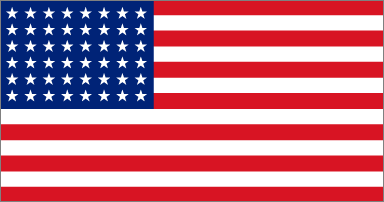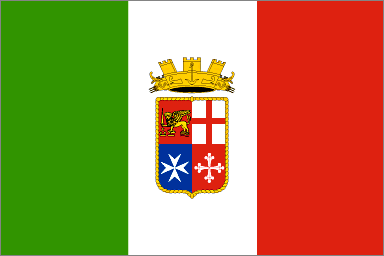NavSource Online:
Motor Torpedo Boat Photo Archive
HM MGB-177
ex-PT-206
Nan - Charlie - Easy - How



PT-206 served the Navies of the United States, Great Britain and Italy



PT-206 served the Navies of the United States, Great Britain and Italy
Specifications:
| Boat Captain | ||
| 01 | LTJG John W. Oswald, USNR - Awarded the Navy Commendation Ribbon and the British Distinguished Service Cross | May 1943 |
|
|
PT's were assigned as required to flagships of the various task forces and groups for use as courier boats and close night screens. PT 208 had a close call on the evening of August 18, when it carried Vice Admiral [Henry Kent] Hewitt, Lt. Gen. Ira Baker and Lt. Gen. Jacob L. Devers to the USS Catoctin [AGC 5], Admiral Hewitt's flagship anchored in the Gulf of St. Tropez. An air raid had just started when the PT put the admiral and the two generals aboard the flagship. Within a minute after they went aboard, a bomb hit the flagship, killing 2 men and wounding 3 officers and 32 men aboard Catoctin, and wounding 4 men on PT 208.
Most of the courier duty was uneventful, however, as were the nightly patrols in the Rade d'Hyeres, to the west of the assault area. The PT blood bank shuttle made daily deliveries to the Delta beaches from Calvi. Three PT's of Squadron 29 were released from the assault area on August 19, at the request of the Senior Officer Inshore Squadron at Bastia, to serve as radar scouts and trackers for the British boats operating against enemy shipping in the Gulf of Genoa, and later other boats of Squadron 29 were placed under operational control of the Senior Officer Inshore Squadron at Bastia.
On August 23 all of the remaining boats were moved from the Baie de Briande to St. Maxime, in the Gulf of St. Tropez so that the PT's could start close inshore patrols on the eastern flank of the assault area to guard against attacks by two new and alarming types of enemy vessels: explosive boats and human torpedoes.
The explosive boat, it was learned later, had a plywood hull about 18 feet long, with 600 to 700 pounds of explosives in the bow section which would detonate when the boat was driven head on into its target. There were two types, one controlled by a single operator who jumped overboard after setting his boat on collision course with a target; the other a drone type, of which several could be directed and detonated by radio from a slightly larger control boat. The explosive boats, driven by gasoline engines, had a top speed of 25 to 30 knots.
The human torpedoes were in effect one torpedo suspended from another. The upper torpedo, which had no warhead and was for propulsion only, floated with its topside awash. From it was suspended the missile torpedo, which could be released by the operator, who sat astride the upper torpedo, enclosed in a watertight casing with his head above the surface in a transparent plastic dome 18 inches in diameter. Top speed was about 4 knots and the operator had only limited visibility.
PT's first encountered explosive boats on the night of August 24/25, when the 552, 553, 554 and 564 broke up a group of them without actually engaging them. One explosive boat narrowly missed a PT and then disappeared in the darkness. Shortly afterwards there were three large explosions in the area, possibly caused by a control boat detonating its drones. Two nights later PT's 210 and 213 intercepted five explosive boats traveling slowly in column. The PT's crossed ahead of the column, dropping a float flare with a 5-minute delay fuse. As soon as the flare ignited, the PT's opened fire. Four of the boats blew up almost immediately, apparently by remote control from the remaining boat, which escaped to the beach. On the night of September 7/8, PT's 215 and 216 made contact with two separate groups of boats. Three boats in the first group blew up, and the control boat again escaped to the beach. Of the second group, one blew up and another was left in flames. The second engagement was confused by a smokescreen laid by the enemy.
On the night of September 9/10, PT's 206 and 214, under Lieutenant Reed, chased and fired on three explosive boats which headed for the beach at 30 knots. The PT's gradually closed the range to 100 yards, when one of the boats stopped dead in the water and blew up with a terrific explosion. A few minutes later another boat turned and headed for the PT's. As it passed close aboard, the crew of the leading PT could see clearly that it was unmanned.
At daylight the PT's reported to the destroyers Madison [DD 425] and Hilary P. Jones [DD 427], which were closing the beach for a bombardment. Madison sighted a human torpedo 500 yards off her port beam and maneuvered at high speed to avoid it. Both Madison and PT 206 opened fire, and the operator of the torpedo jumped out of his transparent dome as his craft sank. PT 206 took him prisoner. A few minutes later a Navy scouting plane spotted another human torpedo. PT 206 went alongside it and DuBose motioned to the operator to abandon ship. He refused and the 206 sank the torpedo by close-range gunfire. During the rest of the morning, planes kept spotting more torpedoes, of which eight were destroyed by PT gunfire or destroyer depth charges.
The PT's thereafter had two more inconclusive engagements with explosive boats. While these actions were usually inconclusive, and the control boats usually managed to escape, the PT's accomplished their purpose of thwarting the enemy attacks. Neither explosive boats nor human torpedoes inflicted any damage on our forces in the invasion of southern France.
| Back to the Main Photo Index | Back to the Patrol Craft/Gunboat/Submarine Chaser Index | Back to the Motor Torpedo Boat (PT) Photo Index |
| Comments, Suggestions, E-mail Webmaster |
|
This page created by Joseph M. Radigan and maintained by Tom Bateman |